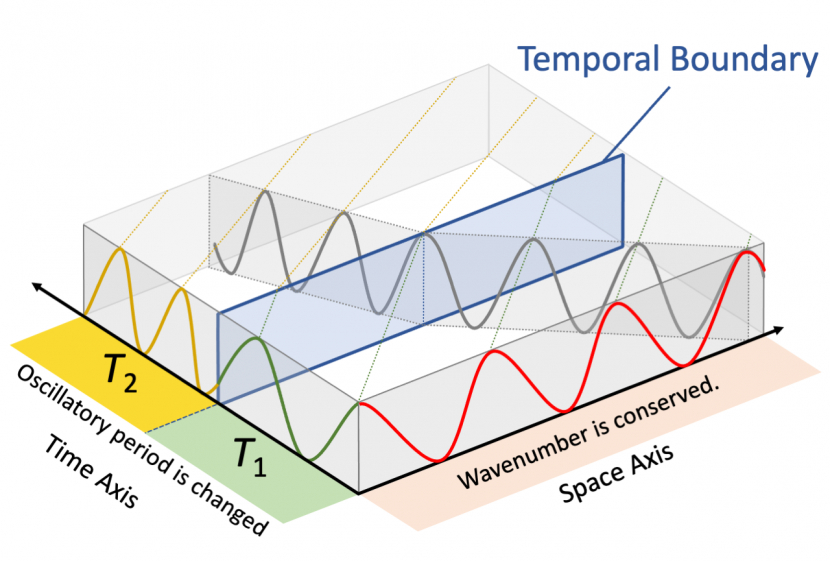Observing ultrafast dynamics of the electromagnetic waves at temporal boundary
- Share
- Tweet
- Send to email
A schematic picture of a wave propagation through a temporal boundary. The angle of the equiphase surface changes as the speed of the wave changes at the temporal boundary, Consequently the frequency of the wave changes in time axis while the wavenumber is conserved in space axis.
CREDIT: Fumiaki Miyamaru, Shinshu University
A new research led by Fumiaki Miyamaru, professor of Faculty of Science at Shinshu University observed the frequency shifts dynamics of the electromagnetic waves around the temporal boundary in the terahertz (THz) region.
As electromagnetic waves passing through the spatial boundary between different media, the spatial wavelength changes. It is related to optical refraction, which can be seen in our daily life, e.g. a straw in a glass of water looks bent. Accordingly, when the temporal boundary establishes in the time domain, the temporal wavelength (i.e. oscillation frequency) changes around the temporal boundary, which results in the frequency of the electromagnetic wave changes. This temporal refraction is one of the most fundamental elements of time varying physics, and it can lead to achieve efficient high frequency conversion.
Unlike the spatial refraction phenomena, the dynamics of electromagnetic waves around the temporal boundary hasn’t been observed since it was difficult to achieve ultrafast and efficient conversions simultaneously. The new scheme proposes to temporally modulate a part of the material rather than the entire material in which the electromagnetic waves to generate the temporal boundary. In consequence, they succeeded in observing the frequency conversion around the temporal boundary and the dynamics in the time domain.
See below for details.
Title: Ultrafast Frequency-Shift Dynamics at Temporal Boundary Induced by Structural-Dispersion Switching of Waveguides
Journal: American Physical Society





